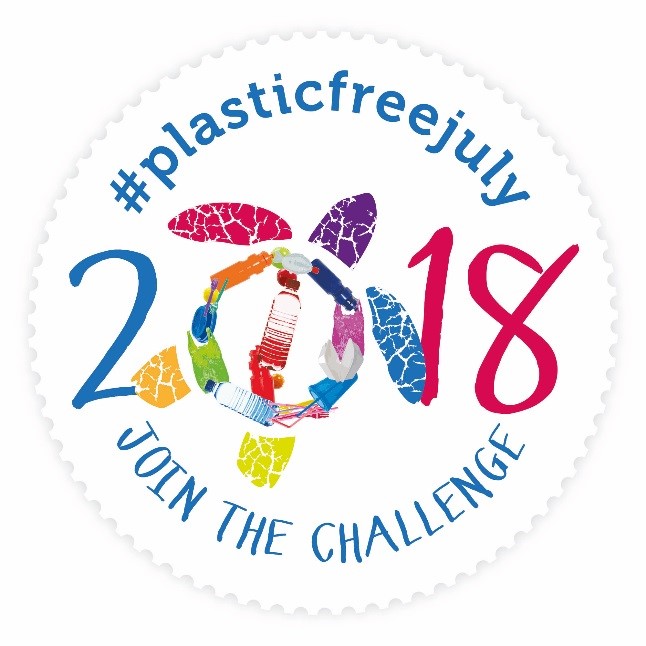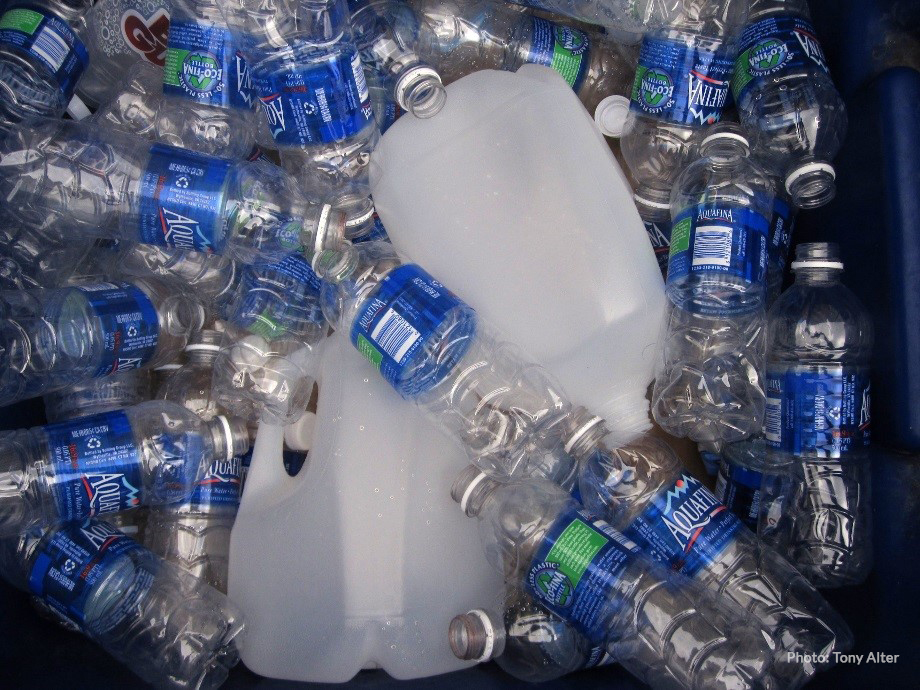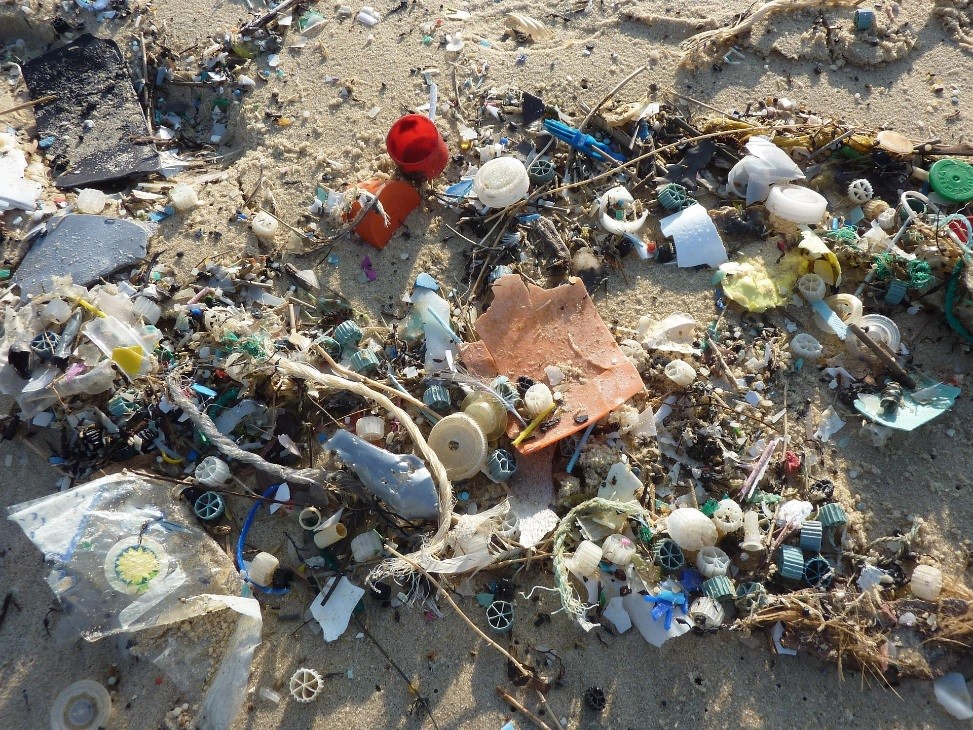
Celebrating #PlasticFreeJuly |10 Simple Things You Can Do
Wednesday, July 11, 2018
By: Revée Needham - Colgate University Upstate Institute Summer Field School Fellow
Microbeads, the small bits of plastic used in beauty and cleaning products, were a hot topic just a few years ago. In 2015, former President Obama signed a bill into law that banned the beads in the entire U.S. While the ban was one step in the right direction, the plastics problem is far from over. Across the world, people from 150 nations have signed up to take part in Plastic Free July to tackle this issue. Are you ready to reduce plastic in your life?
 Why Plastics are a Problem
Why Plastics are a Problem
Traditional plastics are derived from fossil fuels and are often manufactured with the use of fossil fuel-based energy. Fossil fuels are a nonrenewable source of energy, and the burning of these fuels releases carbon dioxide into the atmosphere, which is a contributor to climate change. In addition to the issue of extraction, the disposal of plastics is a huge problem. About 76 percent of all plastics end up in a landfill where it can take anywhere from 500 to 1000 years for plastic to break down. While you may only use that straw in your drink for minutes, it'll be around for much longer.
Recycling, while a praiseworthy effort, often isn't doing enough. As of 2014, only 10 percent of plastic generated in the solid waste stream was recycled in the U.S., with the rest ending up in a landfill or burned in an incinerator. In an ideal world, all the different types of plastic recycled would be reused in a new product that would've used virgin plastic, thereby reducing our need to manufacture more fossil fuels. However, due to the use of mixed plastics, varied recycling programs across the country, and consumers improperly recycling, plastics are often not a part of a closed loop system. "Downgrading" of recycled material means that plastic finds a new life as a different product, such as plastic lumber.

Plastic, due to its incredible durability, takes a while to break down. When it does, due to sun exposure or wind, small chunks of plastic are formed, similar to microbeads. These bits can be large enough to pose a choking hazard to wildlife and small enough to pass through the filters of water treatment plants. Of tap water tested across the U.S., 94 percent tested positive for plastics.
Plastics that end up in the environment can harm our aquatic organisms, by posing choking hazards or potential traps from plastic netting. In addition, aquatic animals eat plastic pieces mistaking them for food. Unfortunately, these animals’ stomachs get filled with plastic, which doesn’t have nutrients, and ultimately the animals die from starvation. Plastics are also known to be hormone disrupters that can bioaccumulate and work their way up the food chain, even ending up in humans!

What You Can Do to Help
After learning about the harms associated with plastic, take action to reduce plastic in your life. To determine which types of plastic you use the most, conduct an audit of your trash and recycling. Make note of where you are using the most plastic (water bottles, food containers, packaged produce etc.) and tackle that area first. Here are 10 tips to get you started:
- BYOB! Bring your own bag while grocery shopping, bottle for water and box for your lunch or dinner. These actions can save you money! For example, single use water bottles can cost 300 times more than tap water.
- Choose unpackaged fruits and vegetables. Most farmers’ markets serve produce this way, along with traditional grocery stores.
- Look up your county’s or city's recycling program to figure out which plastics are unrecyclable in your area and try to avoid those the most. When you do recycle, be sure to rinse out containers so they can be recycled properly.
- Refuse a straw when ordering water or any other drink. These small bits of plastic are largely unrecyclable and unnecessary.
- Cut plastic utensils out of your life. Bring your own silverware instead and simply request no cutlery when picking up carryout.
- Learn about the fabrics in your clothes. Synthetic fleece jackets lose 1.7 grams of microfibers in every wash, ending up in waterways if not caught in water treatment plants.
- Reuse glass jars! While it may be trendy to invest in brand new water bottles and food storage containers, reusing what you already have saves you money.
- Look for plastic-free alternatives to everyday items. Swap your plastic toothbrush for a bamboo one, bottled soap for bar soap, and plastic bags for a reusable canvas one.
- Start a conversation! Explain to your family why you're participating in Plastic Free July, encourage your friends to bring a reusable mug for coffee and ask your favorite grocer to stock unpackaged produce.
- For more tips, search the internet for others who have tested numerous plastic-free alternatives already. Check out Life Without Plastic, My Plastic Free Life, and of course, Plastic Free July to get you started.
Disclaimer on Living Plastic-Free
These suggestions are not feasible, necessary, or even desirable for everyone to do. But, if you can reduce any amount of plastic in your life, that is a step in the right direction. Choose to reduce plastic in a few areas that are within your means and abilities. This process is a journey and will not occur overnight, but don't become discouraged. Together, our collective actions can make a difference to send a message to companies to find viable alternatives to plastic.

Revée recently graduated from Colgate University with Bachelor degree in Environmental Studies and Geography. At Colgate, she worked in the Office of Sustainability, where she focused on promoting behavior changes among her peers and further developed her passions for environmental stewardship and social justice. Revée’s project this summer is focused on tackling issues of overuse and promoting stewardship in the Adirondacks.
Colgate University Upstate Institute Summer Field School Program partners Colgate University students with local organizations to complete projects for the benefit of communities. Students gain a better understanding of issues facing Upstate New York and a deeper sense of place. Traditionally, students were located near Hamilton, NY but this summer, a cohort of students are living and learning in the Adirondacks region.




